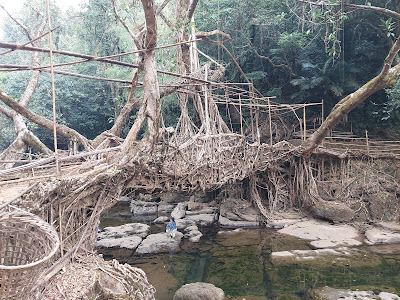My school going daughter refuses to believe India won freedom through non-violence. “Why would the British leave, unless they were kicked out?” is the simple question which our history books fail to adequately answer. I remember that when I was in school, me and my friends faced the same question. Clearly, some pieces of the jigsaw puzzle were missing. The story was never complete, we never got to see the whole picture.
But here it is. In his latest
book "Revolutionaries – The Other Story of how India won its Freedom",
Sanjeev Sanyal challenges the conventional narratives and brings to light the revolutionary
side of India’s freedom struggle. It is a fascinating book - fast paced, racy
and thrilling, but at the same time tragic to the core. It is a story that
simply needs to be told. Over and over again.
How did a group of young men and
women from different backgrounds and regions come together to form a network of
resistance against British rule? How did they plan and execute daring acts of
sabotage or assassination? Did they succeed, and if they failed – why did they
fail? What happened to them afterwards? More importantly, were these just isolated
acts of individual bravado, or part of a larger gameplan to uproot The Empire
from Indian soil? These are the questions Sanyal tries to answer.
The book starts somewhere in the
late 19th century. The Uprising of 1857 had been crushed, and Britain
had established absolute hegemony over the Indian subcontinent. But the
undercurrents of anger and dissatisfaction remained. The author starts with an
overview of the political situation at that time, which provides an excellent context
to the story that follows. The subsequent chapters then follow a largely chronological
order and provide a seamlessly woven narrative of how the revolution unfolded.
Or did it? The readers can judge for themselves.
Of course, some aspects of the
revolutionary side are well known, such as the story of Veer Savarkar & the
Cellular Jail, the travails of Netaji Subhas Chandra Bose or the daredevilry of
Shahid Bhagat Singh or Chandra Shekhar Azad. But what about the rest? What about
the extraordinary life of Pandurang Khankhoje (I bet you have never heard of
him)? The dedication and commitment of Sachindra Nath Sanyal. About Barin Ghosh.
The heart wrenching love story of Ullaskar Dutt & Lila. The untold side of Jallianwala
Bagh. The role of Japan in India’s freedom struggle. The Naval Mutiny. And a lot, lot more. There are countless stories
of exceptional bravery and courage. But also, of shocking treachery and deceit.
Of frightening cruelty and cunning. They are all strung together like beads in
a chain. I am sure you know nothing of this, and after reading the book, you will
wonder why no one told you this before. Sanyal has done us Indians a favor,
and we should be eternally grateful to him for the same.
Sanyal’s simple and easy-going
style makes reading the book a breeze. His personal visits to the places
mentioned, and how they stand today adds the author’s personal touch to the
gripping events those places witnessed a hundred years ago.
Interestingly, the book doesn’t
end with India winning freedom. The author goes one step beyond the event –
what happened to the revolutionaries who survived to see India win freedom? Did the country do justice
to them? In fact, have we really got freedom, or the slave mentality still exists? Clearly,
Sanyal has gone much farther than what an ordinary history book would normally take us to. And this makes it much more complete. For, if you study the past, you can understand the present
better. The present is nothing but a continuation of the past.
Having read "The Ocean of Churn" earlier, I was keen to read the “Revolutionaries” as well. And the book did not disappoint, far bettering even my elevated expectations. Don’t miss it.
Thank you, Mr. Sanyal.








